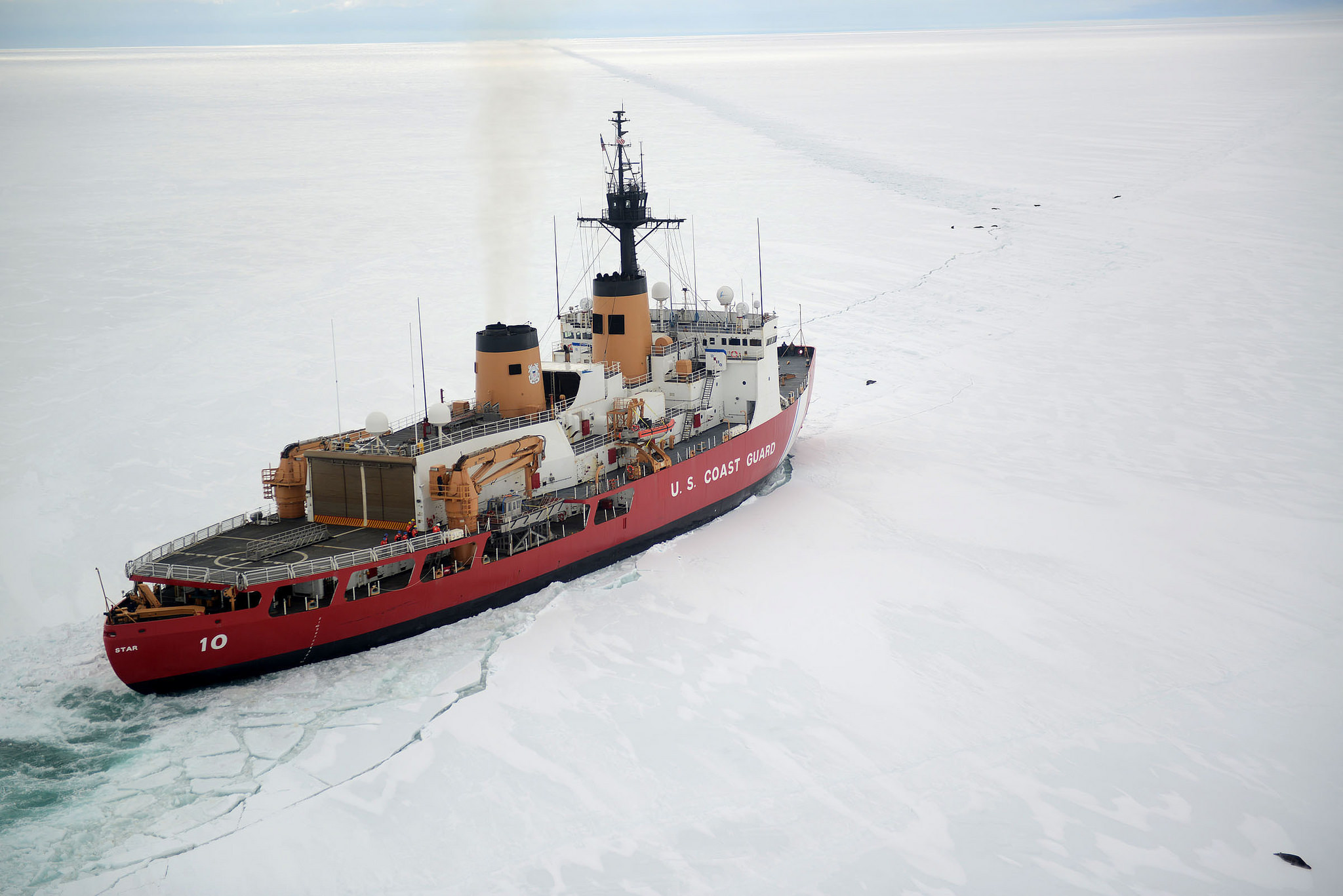Defense bill could keep plans for progress on a new US heavy polar icebreaker alive
A week after the U.S House of Representatives passed a Homeland Security spending bill stripped of funding for a heavy polar icebreaker, a Defense bill leaves open a channel for procurement to continue.

The National Defense Authorization Act passed by the Senate on Wednesday provides $716 billion for defense in fiscal year 2019 — and revives the prospect of continued progress on a new U.S. heavy polar icebreaker.
Notably, the act affirms last year’s commitment to building one polar-class heavy icebreaker — and it permits the Coast Guard to pursue up to five more.
Congress also urged the Coast Guard to build the icebreakers “expeditiously,” requesting all six icebreakers by 2029. The act laid out delivery dates for each vessel. The contract for the first heavy icebreaker should be awarded in the next year, and the following five vessels should be contracted out every year until 2023, with deliveries of the vessels beginning in 2025 and concluding in 2029.
It’s an ambitious schedule.
As a Government Accountability Office report last week pointed out, the existing timeline for constructing the first heavy icebreaker may already be unrealistic. The Coast Guard plans to have the ship built in 2.5 years, but the GAO report suggests that it will take closer to 3.5 years.
Still, Alaska’s senators celebrated the icebreaker initiatives.
“For the first time ever, the NDAA includes an authorization of up to six heavy, polar-class icebreakers for the U.S. Coast Guard – something that is long overdue,” Sen. Dan Sullivan, who was on the committee to reconcile differences between the House and Senate bills, said in a statement.
“The legislation bolsters our military’s cold weather capabilities, and sends a firm signal that Congress expects to see the construction of six new polar icebreakers,” Sen. Lisa Murkowski added in a statement.
The next question: Who will foot the bill?
The President’s Supplemental Budget Request included $750 million for the heavy icebreaker this year, and the Senate version of the Homeland Security appropriations bill acquiesced to that request — only to have the funding stripped from the House version of the bill. The differences between the Senate and House versions will be squared away in conference after August recess.
Last year, the Navy received funding through Department of Defense — not Homeland Security — appropriations to construct a heavy icebreaker.
Normally, Coast Guard shipbuilding would be funded through the Homeland Security appropriation acts. But that’s not always the case; the medium icebreaker Healy, for instance, was largely funded by the Defense Department. In fact, about 80 percent of the money — $300 million of the $359.6 million — provided to date for the heavy polar icebreaker program has come through defense appropriations.
This year’s Defense Authorization Act specified that the next four years of funding would come from the Homeland Security budget — in particular, $1.8 billion that would fully fund 3 icebreakers. In addition, the act stated that “additional Department of Defense funds are not required to procure icebreakers for the foreseeable future.”
The NDAA also directed the Department of Defense to revamp its Arctic strategy by next June — specifically, to “improve and enhance joint operations.” And the act provided more than $250 million in military spending to Alaska.
The bill now goes to Pres. Donald Trump for his signature.